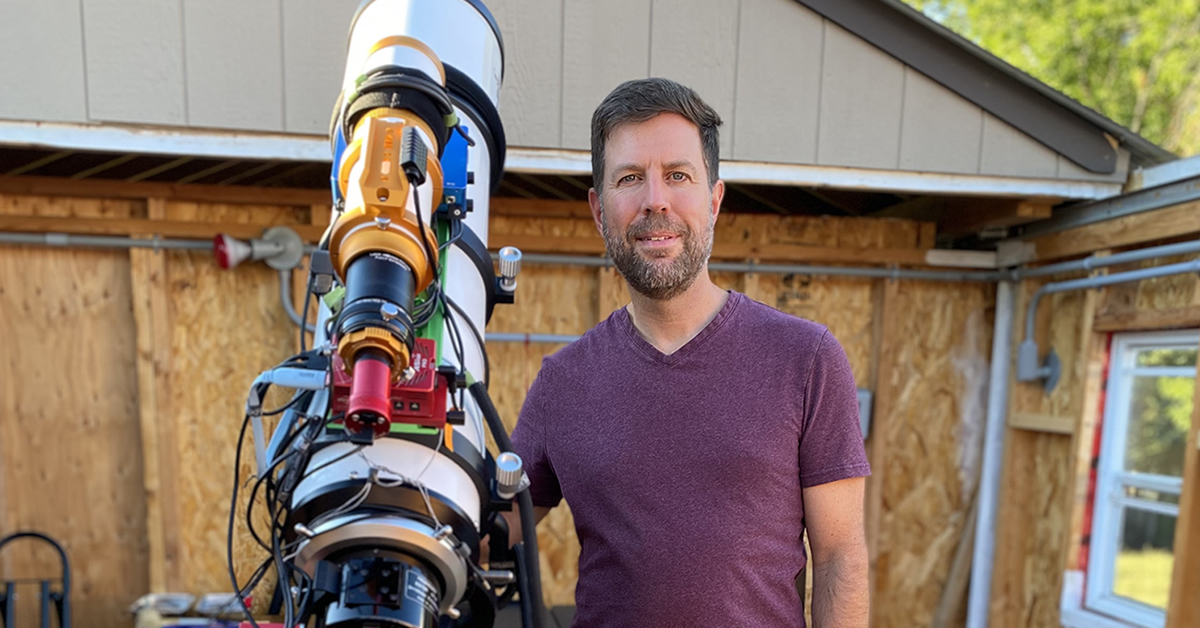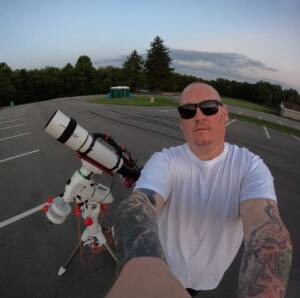
Discovery of the M31 [OIII] emission arc
Recently, a major discovery by an international team of amateur astronomers and scientists has become a huge online hit, and this new discovery is just located in one of the

David Jenkins is the winner of ASIWEEK #34 and #38. Over the past years, he has produced so many great astrophotos, including the ones we displayed here. You may see his gallery on his website if you get interested – Believe us, those gorgeous images are really worthwhile to watch!
My name is David Jenkins and I live in Southwestern Ontario, Canada where I love to spend clear nights in my backyard under the stars collecting thought provoking images of deep space. For as long as I can remember I have had an enthusiastic interest in astronomy and anything space related. I feel fortunate to live under Bortle 5 skies. Someday, I hope to find some even darker skies for this wonderful hobby.

As a teenager, I attempted to photograph the moon through my wobbly Tasco telescope using my Pentax 35mm film camera pointed at the telescope’s diagonal prism. Not surprisingly, none of the photos turned out. Years later, in 2007, now married with three children, I purchased a 12-inch Meade RCX-400 telescope, which was very large and very heavy.
Since I had nowhere to store it, my telescope sat in our living room. A few months later, construction began on my backyard SkyShed so that I could have a permanent home for my new telescope. Being a fork mounted telescope, it was very challenging for me to take any long exposure photos. Instead, for many years, I spent my time imaging the moon and planets.
In 2020, I purchased a German Equatorial Mount and a SkyWatcher Refractor. My journey into long exposure, deep sky imaging began.
Old Versus New:

My backyard SkyShed:

My parents were always supportive of my interest in Astronomy. Also, I have fond memories of my Grandmother talking to me about the night sky. She knew many of the constellations and asterisms, which amazed me.

I currently have several Sky-Watcher and William Optics refractors, two Sky-Watcher German Equatorial Mounts, and a Celestron EdgeHD 8”. I power all of my equipment with the ASIAIR (I own two of them) from inside my house using my iPad. I use the both the ASI2600MC Pro and MM Pro cameras to take my images.

I almost always take my astrophotos from my backyard. That way, I don’t have to spend time setting up and tearing down my equipment. It also saves me time that would otherwise be spent traveling to and from another site. I love my backyard!

Here is my first astrophoto of the Orion Nebula from January 2008. It’s fun to look back at my old images. I’m amazed at how far technology has advanced in the past 14 years.

As many have come to realize, this is a very complex yet rewarding hobby. I enjoy building telescope rigs, taking images, as well as processing my data using both PixInsight and Photoshop. The learning never ends, which I love!

I enjoy problem solving as it engages the mind. I try to take a calm, logical approach to solving technical challenges, which has served me well.

Narrowband image processing has been my biggest achievement. I’m still working to further develop my processing skills with broadband imaging. There are a lot of talented people out there who provide me with inspiration.

My favorite celestial target is the one that I am currently working on. The night sky is full of wondrous targets.

I spend a great deal of time framing my targets in a way to provide a unique perspective not typically seen by other astrophotographers. This often involves moving the key subject matter away from the centre of the image in order to draw your eye to some of the other intricate and complimentary details. This requires me to spend many hours (and nights) imaging the same target in order to bring out the faint nebulosity. To achieve some depth within my photos, I carefully balance the colours using the histogram tool. With narrowband imaging, I strive to pull out the deep blues, subtle yellows, and deep reds and orange to make a dramatic looking image without oversaturating the target.

I’m now running two telescopes simultaneously, which presents some fun challenges. I soon hope to have both telescopes pointed at the same target where one image in RGB data using the ASI2600MC Pro while the other images in Luminance and/or Hydrogen Alpha using the ASI2600MM Pro.
This should be a good combination for galaxies with the added benefit of reducing the number of nights required to image each target.

I would love to see a ZWO field rotator that can be controlled with the ASIAIR. I currently use the Pegasus Rotator, but it is heavy and needs to be controlled separately. Another suggestion would be for ZWO to produce mounts that automatically polar align themselves instead of relying on manual intervention to adjust the RA and DEC knobs. That would be a real competitive advantage!


Recently, a major discovery by an international team of amateur astronomers and scientists has become a huge online hit, and this new discovery is just located in one of the

That 11-year-old boy staring at Horsehead Nebula photo would never have imagined… Decades later, he’d be capturing amazing deep-sky images from his Florida backyard! “ It was amazing to see

Hello,Sara Harvey,thanks for accepting our interview invitation. Congratulations on winning the ASIWEEK competition in week! Q1: At first, congratulation that your nice image won #ASIWEEK. Can you introduce yourself to

Astrophotography is more than just capturing images of the night sky—it’s a journey of discovery, patience, and creativity. For this passionate astrophotographer, what started as a chance encounter with a

Taranjot Singh, an Indian origin Australian astrophotographer who is making waves on the international stage. Taranjot has been recognized as one of the Top 5 finalists in the prestigious Siena

The back focal length is advised by telescope manufacturers. Since most telescopes have a 55mm back focal length, we are here to provide detailed instructions for all ASI cooled cameras.Please